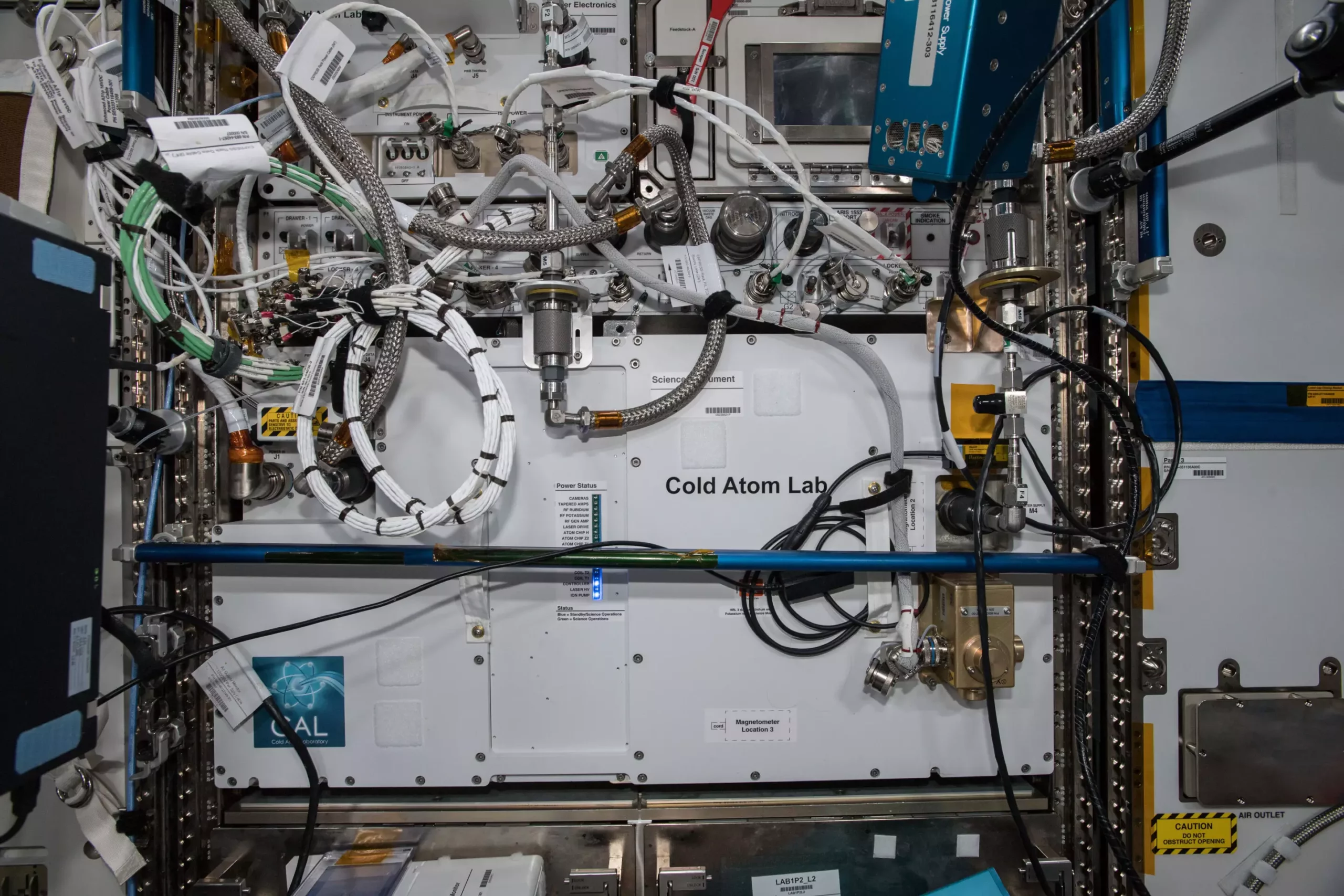The groundbreaking Cold Atom Lab by NASA, situated aboard the International Space Station, has recently achieved a significant milestone in the realm of quantum science by utilizing ultra-cold atoms to sense vibrations in the space station’s surroundings. This remarkable endeavor marks the first instance of deploying ultra-cold atoms to detect environmental changes in space, and as detailed in a publication in Nature Communications on Aug. 13, it showcases the longest demonstration of the wave-like behavior of atoms in freefall within a space environment.
The Cold Atom Lab’s science team employed an atom interferometer, a quantum tool capable of accurately measuring gravity, magnetic fields, and other forces, to carry out their measurements. This technology, instrumental in studying the fundamental aspects of gravity and enhancing navigation methods for aircraft and ships, holds immense potential for transforming space-based applications due to the microgravity conditions that facilitate extended measurement durations and heightened instrument sensitivity.
Despite initial concerns regarding the fragility of the sophisticated atom interferometry equipment in an autonomous operational setting, the Cold Atom Lab has proven that remote operation from Earth is feasible. The successful culmination of this feat, as noted by Jason Williams, the project scientist at NASA’s Jet Propulsion Laboratory, represents a significant triumph that required relentless dedication and a spirit of daring from the entire team.
Highly precise space-based sensors capable of measuring gravity offer a plethora of potential applications, including determining the composition of celestial bodies within our solar system and tracking water and ice movements on Earth. Notably, advancements in atom interferometry could contribute additional precision and stability, unveiling crucial insights into dark matter, dark energy, and even providing novel approaches to testing Einstein’s theory of general relativity.
Unveiling Quantum Mysteries in the Microgravity Environment
The Cold Atom Lab, resembling the size of a minifridge, embarked on its journey to the space station in 2018 with the primary objective of propelling quantum science forward by creating a permanent facility within the microgravity surroundings of low Earth orbit. Through cooling atoms to temperatures near absolute zero, the lab facilitates the formation of a Bose-Einstein condensate, enabling the macroscopic exploration of quantum properties that exhibit a dual nature of solid particles and waves.
As researchers utilize quantum technologies implemented in the Cold Atom Lab to delve into the enigmatic behavior of atoms at quantum levels, there arises a potential for groundbreaking discoveries and innovation that could revolutionize everyday life. The ability to manipulate Bose-Einstein condensates in microgravity settings opens new avenues for exploring fundamental questions in physics and developing transformative quantum technologies, leading humanity into an exciting quantum future.
By championing the integration of quantum science in space exploration through initiatives like the Cold Atom Lab, NASA is spearheading a new era of discovery and technological advancement that holds promise for unraveling the mysteries of the universe and shaping the future of scientific inquiry.


Leave a Reply